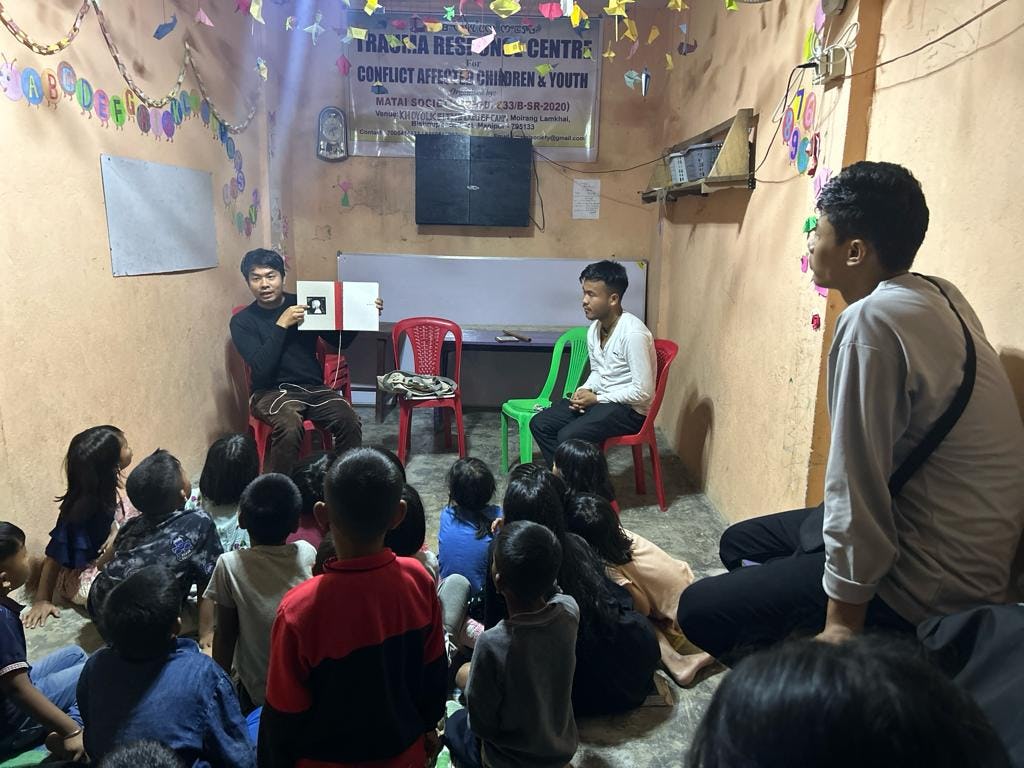Manipur Artists at the Crossroad - A Reflection on the Current Conflict
The conflict that commenced on the 3rd of May 2023 between the Meitei and the Kuki ethnic groups in Manipur persists, casting a shadow over the artistic community
The conflict that commenced on the 3rd of May 2023 between the Meitei and the Kuki ethnic groups in Manipur persists, casting a shadow over the artistic community
This regrettable violence has significantly affected both existing art pedagogy and practices in present Manipur. As the conflict lingers without signs of reconciliation, Manipuri artists face numerous challenges. Yet, within the struggles, the artistic community carries a weighty ‘responsibility,’ a luminous ember amidst the shadows. What alchemical transformations will breathe life into artistic practices and pedagogy in the aftermath of this conflict? Can the current crisis serve as a compelling backdrop against which artists can sculpt opportunities to address the intrinsic issues that are inherent within Manipur's artistic community, of the issue and problem of exclusivism? Despite the symphony of negative consequences and the harsh strains of adversity, a latent prospect arises for the artistic community to realign itself with the ground realities, an imperative for resurrecting what has been lost.
Amidst the labyrinth of uncertainties, Manipur artists now stand at the crossroads, facing decisions that will etch the future of artistic and cultural practices in Manipur. With the ongoing conflict, it is a challenging time for artists. For the past seven months, major art exhibitions, shows, festivals, and workshops have been nonexistent. This new reality poses a series of difficult and complex issues for artists. However, despite the hardships, the role and responsibilities that artists must undertake during such situations are colossal. This responsibility begins with rethinking and reimagining the artist's role now and in the future. A moment of deep introspection into one’s art practices and pedagogy, considering its past, present, and future, is necessary within the Manipuri artistic community. Urgent discussions are needed on the ethics of art practices and the future of art pedagogy in post-conflict Manipur. With seven months elapsed, the ramifications of the conflict remain intense, posing difficult questions that demand answers. Artists in Manipur must navigate this situation, especially when life has been disrupted violently. Despite the palpable loss and the void left in the conflict’s wake, the violent upheaval has sparked introspection of profound depth. This prolonged period of unrest provides artists with an opportunity to actively engage, observe and transcend passivity in their responses.
Reviving the once vibrant artistic and cultural life disrupted by the conflict is a daunting task. However, some artists and cultural organisations in Manipur are beginning to reflect on the devastating consequences of violence on the art making, production and reception of art. Some artists and groups are engaging in activities within relief camps, conducting art workshops for displaced children. Although these activities are not directly related to art-making per se but these contributions hold a meaningful place in Manipur's contemporary art and cultural scenario. For instance, art and cultural institutions such ‘SIYOM’, 'Happy In Khol' and 'Matai Society' - have been providing art activities and Art workshops for conflict-affected children in various relief camps. This series of workshops for the affected children becomes a meaningful contribution to these Art and cultural groups in the present chaotic situation.
Nevertheless, it is the sole responsibility of artists in Manipur to find ways to re-engage with the masses and audience and play a role in the current situation. Simultaneously, the situation demands artists to be more sensitive than ever before; without this sensitivity, artists may find it challenging to truly relate to the masses and their audiences. The current socio-political turmoil presents an opportunity to address inherent problems in Manipur's artistic culture. Despite being a small state with a few established artists, there is a lack of an artistic collective spirit. Notably, there is no strong artist collective from Manipur, in spite of the many well-known individual artists working in various mediums. Divisions persist between newer and older generations of artists and between amateur and established artists. Forms and styles divide artists within the same medium, while there is a lack of dialogue and communication among established artists. These divisions and the lack of communication can significantly impact the future of art and practices in post-conflict Manipur. Is it not time for artists to transcend traditional boundaries and divisions within the artistic community in Manipur, unite collectively, and address the pressing issues. Is it, not time to bridge the gap between ideologies and come together seamlessly to respond to contemporary social conditions, leaving behind the exclusivist attitude for a time being? Waiting for external provocations to unite is no longer viable. It's time to collectively ignite the flame and navigate the dark and dangerous path ahead, overcoming obstacles at each turn. Our future, and that of coming generations of artists, depends on our actions in the present. The future of art and culture in Manipur lies in the sensitive responses of artists and cultural workers to the ongoing situations - an artistic odyssey amidst the dissonant chords of conflict.
SIYOM : An Artspace and institution based in Imphal Manipur, Conceptualized as a “Space,” SIYOM symbolises the womb, the wellspring of the creative spirit. SIYOM is the inspirational space, a confluence of creative forces encompassing the whole range of art forms, from the traditional to the unconventional, from the structured to the experimental Happy In - khol : Is a Community group and a social enterprise, based in Imphal Manipur - working on a small scale, holistic, energy efficient that contributes to the regeneration of the earth.
Matai Society: Matai society runs Trauma Response Centres for Conflict-affected Children and Youths in various camps apart from doing general relief works that focus on assessing materials needs and sourcing the same.




